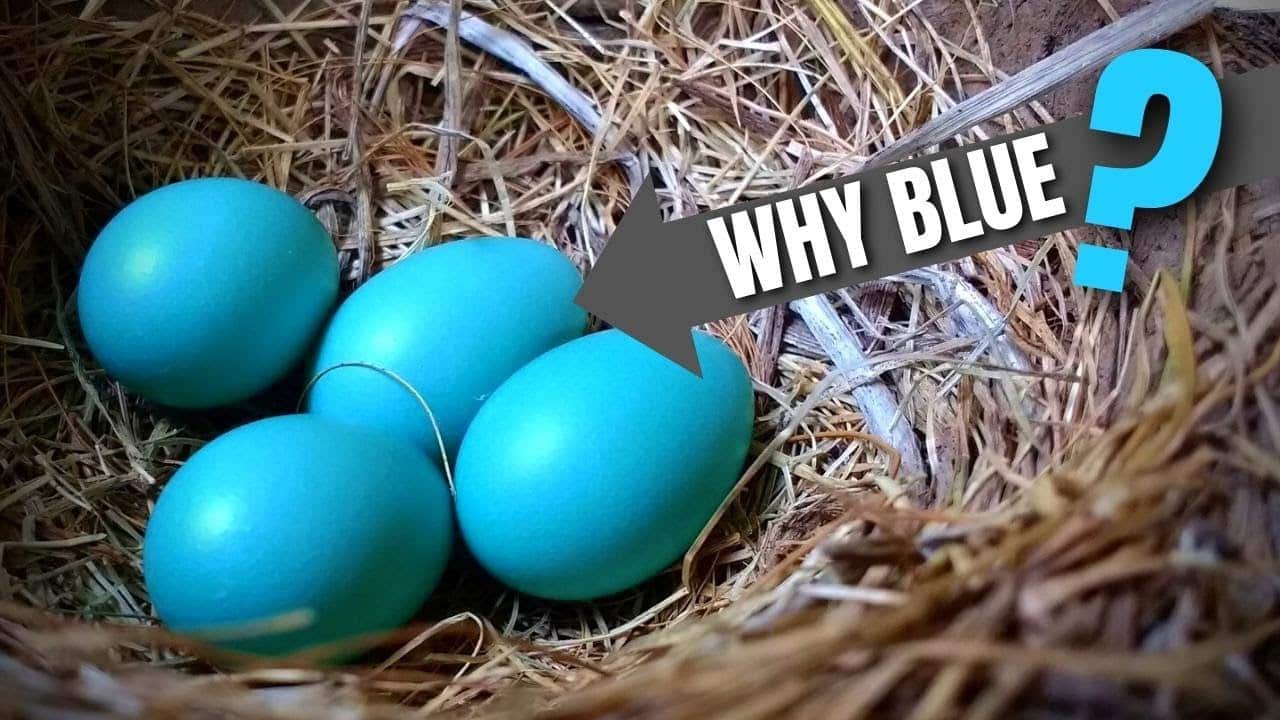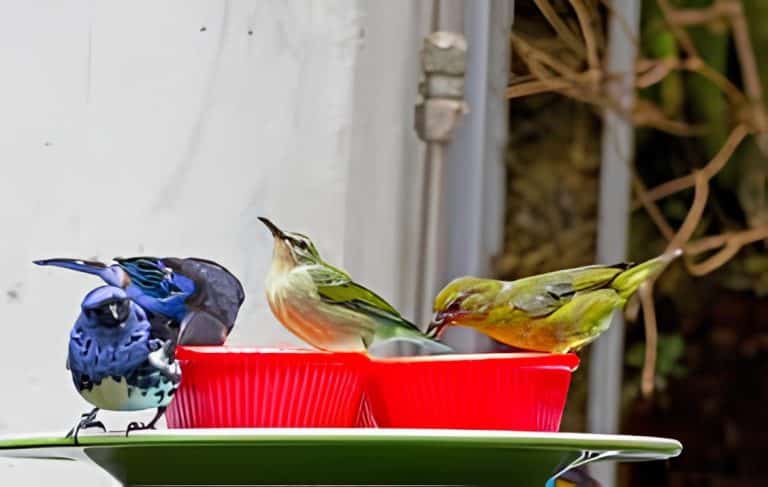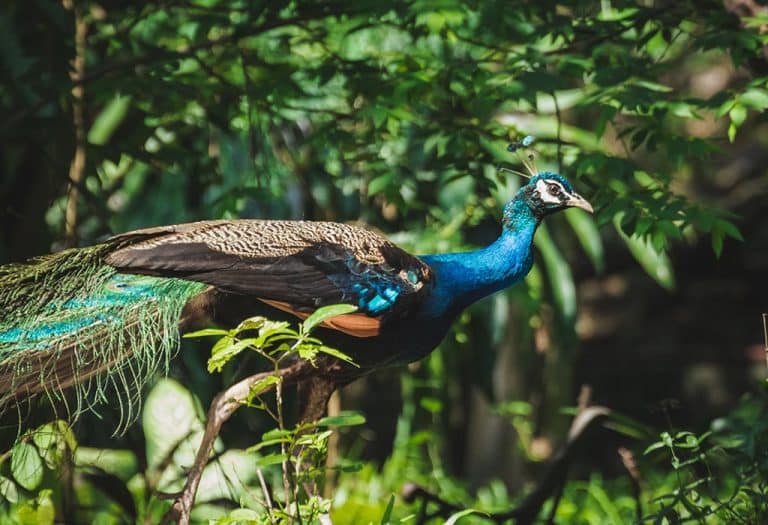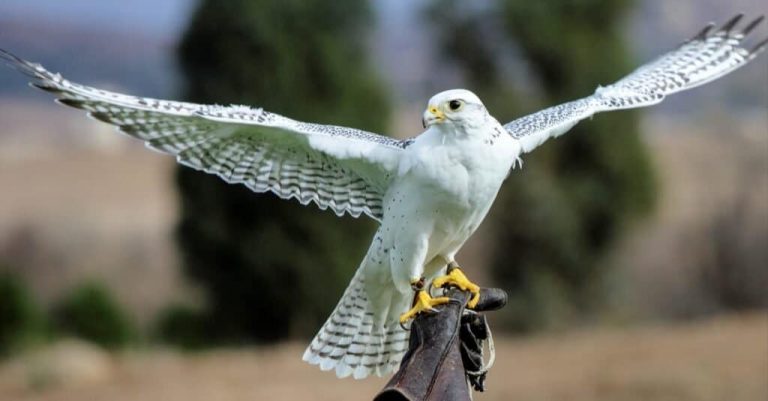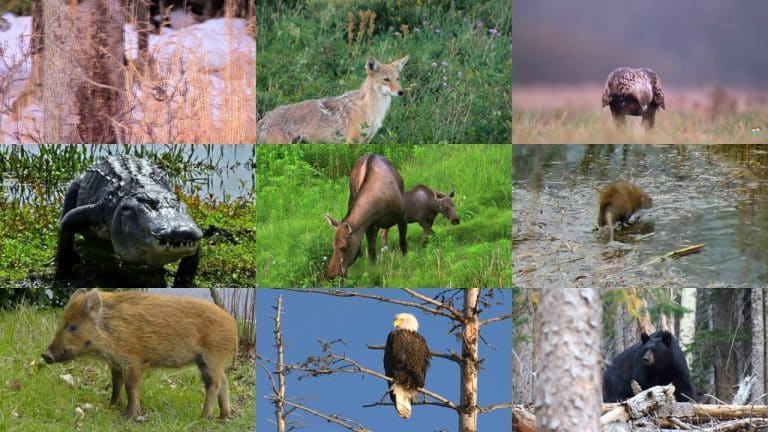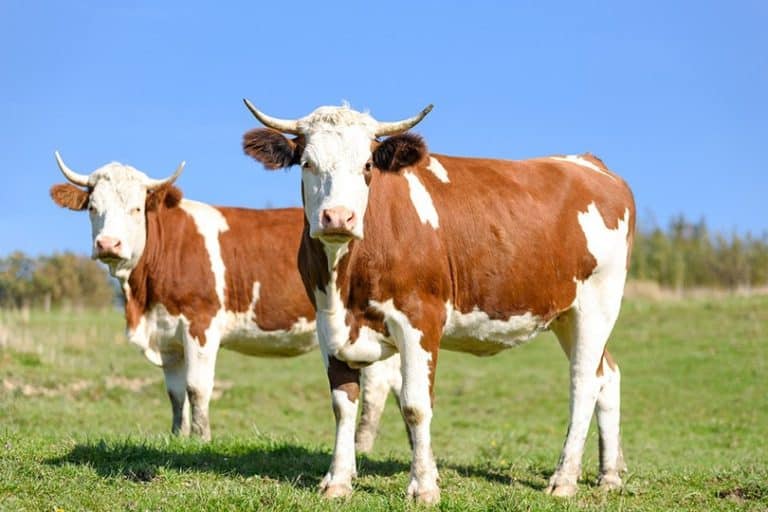22 Birds that Lay Blue Eggs and Why?
In the world of avian diversity, all species have unique features and adaptations. Among many unique characteristics, birds laying blue-colored eggs are the most captivating. Scientists and enthusiasts have always wondered why some birds lay blue eggs, questioning the evolution of these birds.
It is to be noted that this blue color of eggs is not something sudden but an evolutionary process. This process is linked to ecological and environmental factors. Starting from American Robbin to Linnet, all of them lay blue-hued eggs.
You will learn why these eggs are blue, about 22 different birds that lay blue eggs, blue speckled eggs, what bird, and how the color of their eggs benefits these.
Different Types of Birds and Their Egg Color
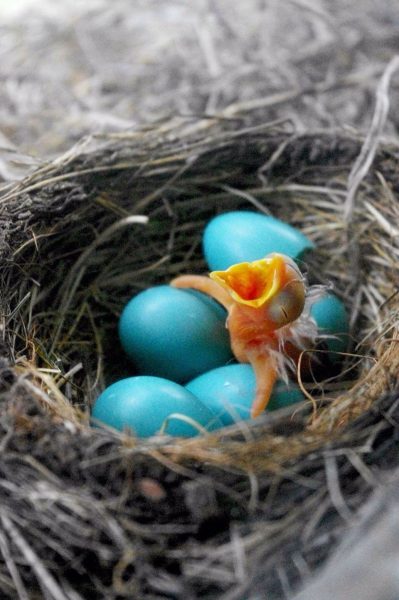
You might think that all bird eggs are white, but that is not true. There are many birds whose egg color is different. Below is a list of birds and their egg colors:
|
Bird Name |
Egg Color |
|
Blue Tit Bird |
Light green color with brown spots |
|
Magpie |
Green-blue color with brown spots |
|
Collared Dove |
White cream color |
|
Carrion Crow |
Blue-green color with dark brown streaks / grey streaks |
|
House Finch |
Blue or white color & black to pale purple spots |
|
Jackdaw |
White or pale blue color with grey spots/ brown spots |
|
Pied Avocent |
Grey or light brown color with black spots |
|
Lapwing |
Brown, grey color with black spots |
|
Blue Jay |
Blue, pink color with brown spots |
|
Robin |
Blue color with soft brown spots |
|
Banded Stilt |
White color with streaky black patterns |
|
House Martin |
White color and glossy |
|
Linnet |
Pale blue color with brown or purple dots |
|
Oystercatcher |
Grey light brown color with black spots |
|
Northern Lapwing |
Brown color with black spots |
|
Razorbill |
White color with black spots |
|
House Sparrow |
White color with black or grey spots |
|
Glossy Ibis |
Blue-green color |
|
Starling |
Pale blue with brown spots |
|
Mourning Dove |
White color and smooth |
|
Goldfinch |
White color with reddish brown spots |
|
American Robin |
Blue or green color |
|
Northern Cardinal |
Blue or pink color with brown spots |
|
Weebil |
Creamy or buff color |
|
Comb crested Jacana |
Brown color with black markings |
|
Mallard |
White or green color |
|
Muscovy |
Greenish tint color |
|
Black-legged kittiwake |
Cream brown color with grey spots |
|
Northern Cardinal |
Beige color with brown spots |
|
Baltimore Oriole |
Pale grey blue |
List of 22 Birds That Lay Blue Eggs
Many birds belong to the avian species and lay blue-colored eggs. The shades of these eggs may differ, but the blue color is surely astonishing.
1. Starling
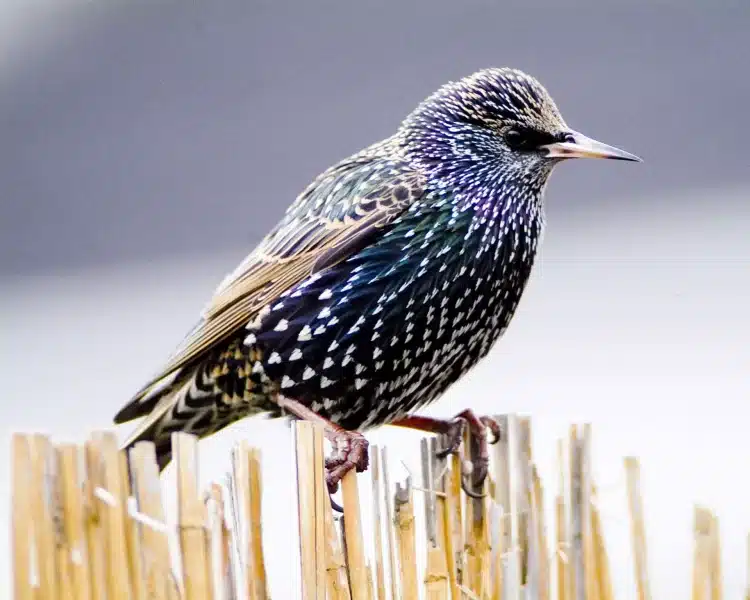
Starling is a blue egg-producing bird that can produce up to 6 eggs. Their eggs are blue, devoid of any markings or speckles. But some eggs might appear a little greenish. These glossy-looking eggs are oval in size.
Both males and females incubate their eggs together. You will find them laying the eggs in the same rest where they previously produced them. The incubation period is 12 days, with up to two broods in a year.
2. Dunnock
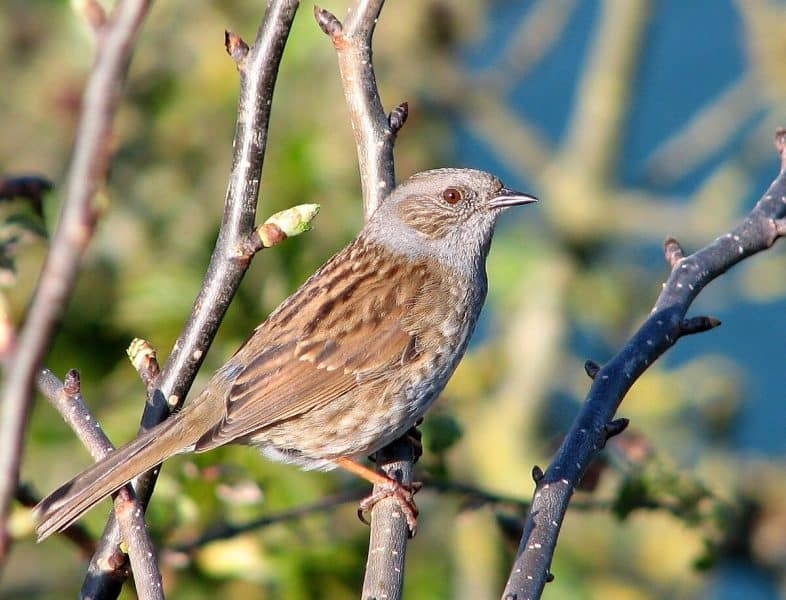
Dunnock, also known as House Sparrows or Hedge Sparrow, is another set of birds that lay bright blue eggs. Since they are small birds, they are only capable of laying up to six eggs that are quite small in size.
The color is mostly turquoise with tiny black or brown specks. They are mostly present in hollow nests for better protection. The first brood of Dunncoks are preyed on.
3. Great Tinamou
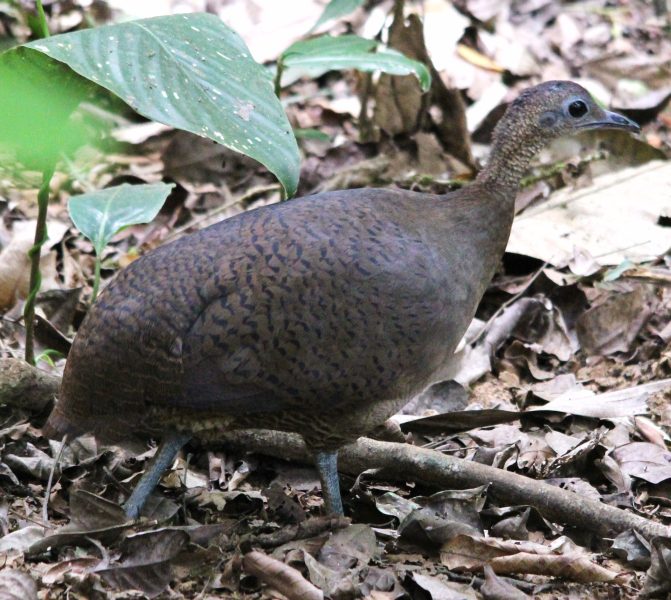
It is a native bird of South America and produces colorful, smooth, and shiny eggs that are green, violet, turquoise, and pink in color. The eggs laid by them are due to the nanostructure coloration.
Since their nests are not at a higher place, the eggs can be seen easily. It is the male great tinamou that takes care of the eggs starting from the incubation period.
4. Great Blue Heron
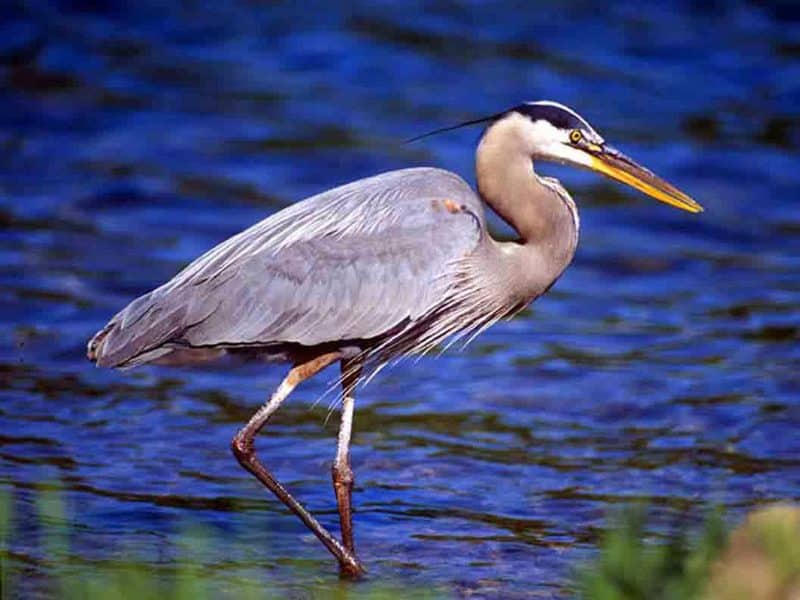
It produces light blue colored eggs that turn white during the incubation period. The nests are in trees, bushes, mangroves, and other places. The female herons are courted as soon as the mating season starts.
When the female herons are ready to mate, the male birds start arranging the nest. The clutch size is 2 to 6 eggs, with up to two yearly broods.
5. Mountain Bluebird
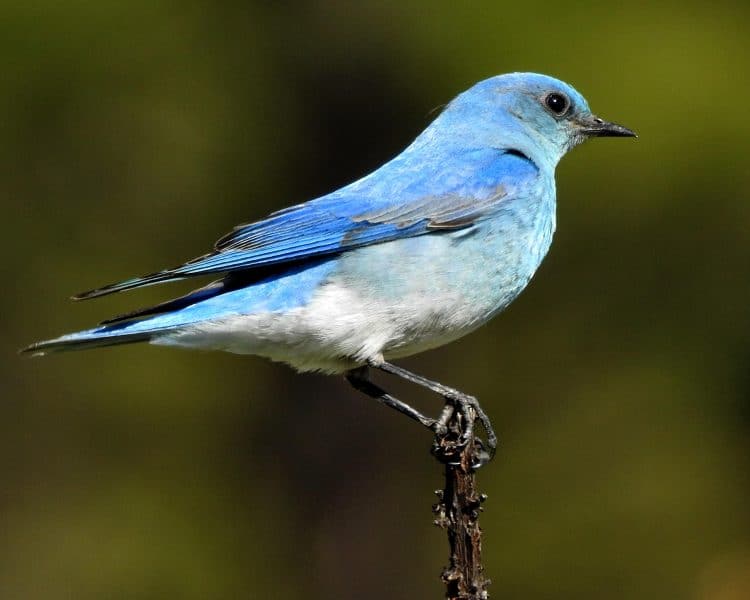
Mountain bluebird’s incubation period lasts for 18 to 21 days, and they can lay 4 to 8 eggs. The color of the eggs is pale blue. The female birds bring along the nest materials.
The nest is insulated with coarse and dry grass stems. After the breeding season is over, more fledglings become independent. In a few hours or days, the fledglings disappear from the nest.
6. American Crow
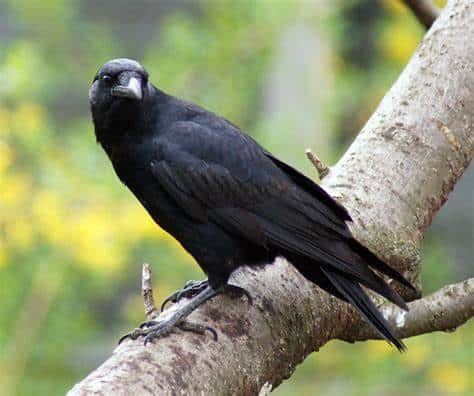
American crows have black beaks, eyes, and plumage. They lay eggs that are dull blue-green or grey-green. These eggs also have scars on them that are grey and brown.
They mostly prefer building their nest on evergreen trees, but when not available, deciduous trees are their only option. Both genders of birds help in bringing materials for making the nests. Their incubation period is 16-18 days, and the number of eggs varies from 3 to 9.
7. Little Blue Heron
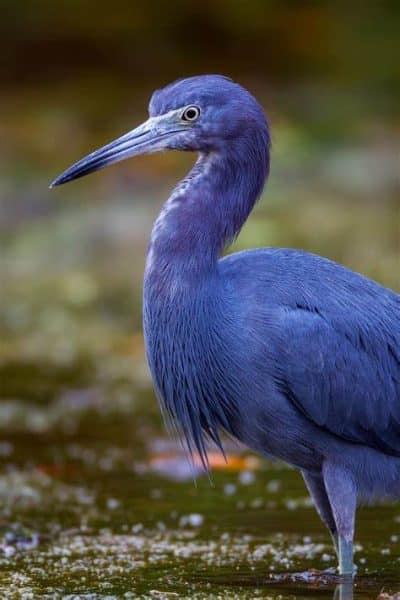
Little blue herons lay pale blue-green eggs, and their nests are in swamps, ponds, lagoons, and others. These birds, like any other, make sure that their nests are away from predators’ reach. They take almost 3 to 5 days to build their nest.
Both male and female sexes perform the incubation. The incubation lasts 22 to 23 days, and lays 3 to 4 eggs. In addition, they brood only once a year.
8. Wood Thrush
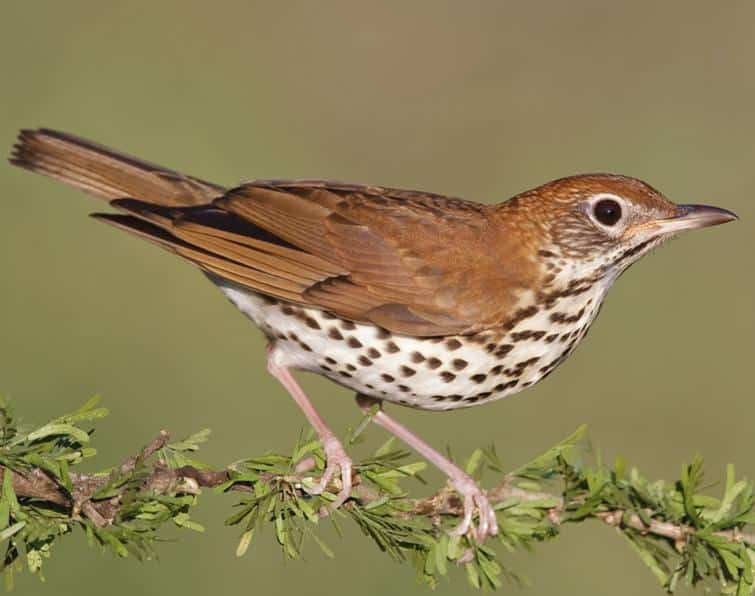
These birds lay turquoise green colored eggs and have an incubation period of 13 to 14 days. These birds have rust-brown upper parts and black spots from the sides and breasts. Their clutch size is 3 to 4 eggs.
The female birds take 3 to 6 days to construct the nest using stems, leaves, plastic, and dead grass. They produce broods up to 2 times a year.
9. Blue Mockingbird
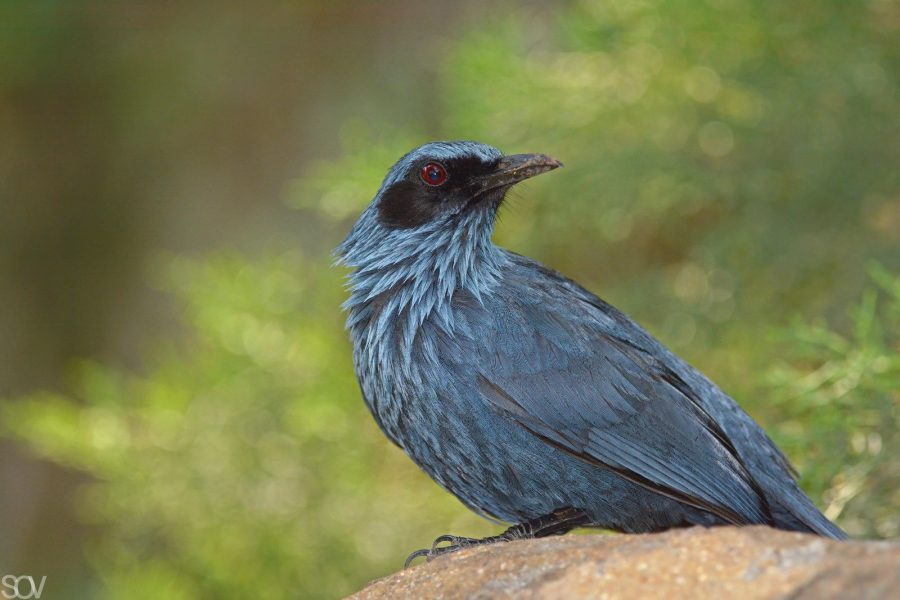
Blue mockingbirds lay blue-green eggs, which are spotted. These birds are widely found in the United States and have shrubs and woodlands as habitats. The male birds select the nesting site, and multiple nests are built for the females to choose from.
The first chicks are taken care of by the male birds. The incubation period is 12 to 13 days, and they lay 2 to 6 eggs.
10. Swainson’s Thrush
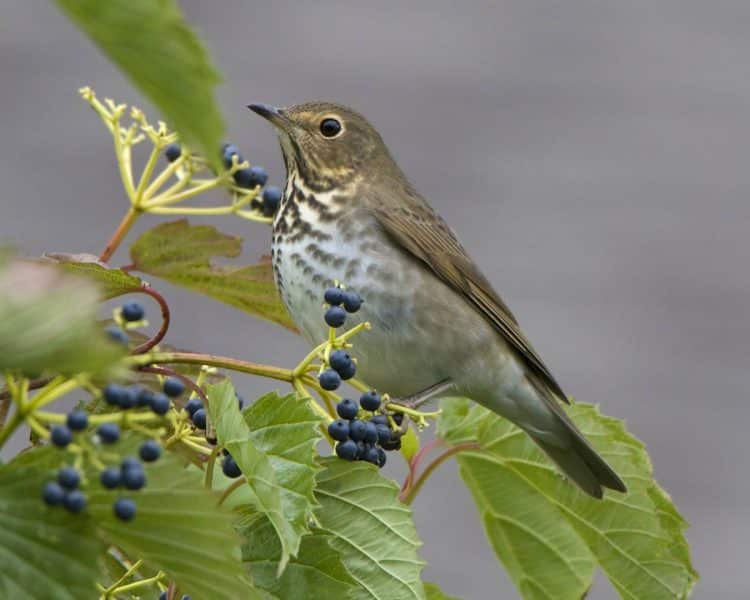
Swainson’s Thrush is known for laying greenish-blue speckled eggs with brown or red spots. They have nests built in forest understories like shrubs or saplings.
Willow, Oak, Rose, and Maple are some plants where they lay their eggs. The incubation lasts 10 to 14 days, and they lay 1 to 5 eggs during yearly broods.
11. Goldfinch
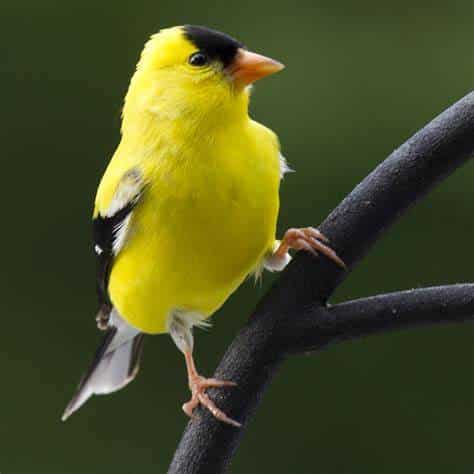
These birds love to live in gardens and lay bluish-white eggs. Some of their eggs are also greyish violet with reddish spots on them. Their nests are made of random materials like plant fibers, animal hair, and feathers.
They breed in the same location for the next year’s mating season as well. Their incubation lasts 12 to 14 days, and the clutch size is 2 to 7 eggs.
12. Magpie
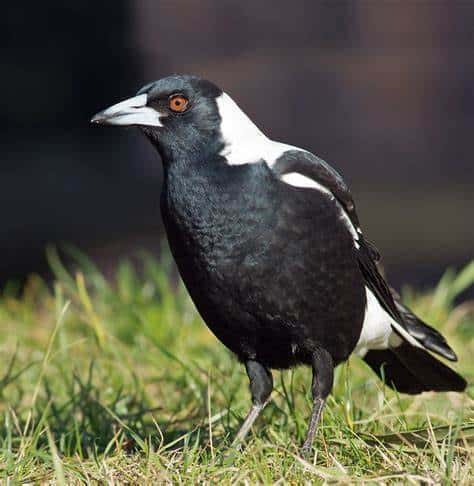
These are another set of birds that lay bluish-green color eggs in secured bushes or trees. Both the male and the female bird participate in building the nests using twigs, hair, grass, and others.
When the eggs are produced, they incubate for 15 to 20 days. During yearly brood, they lay 1 to 9 eggs at a time. The male feeds the female birds when they are incubating.
13. House Sparrow
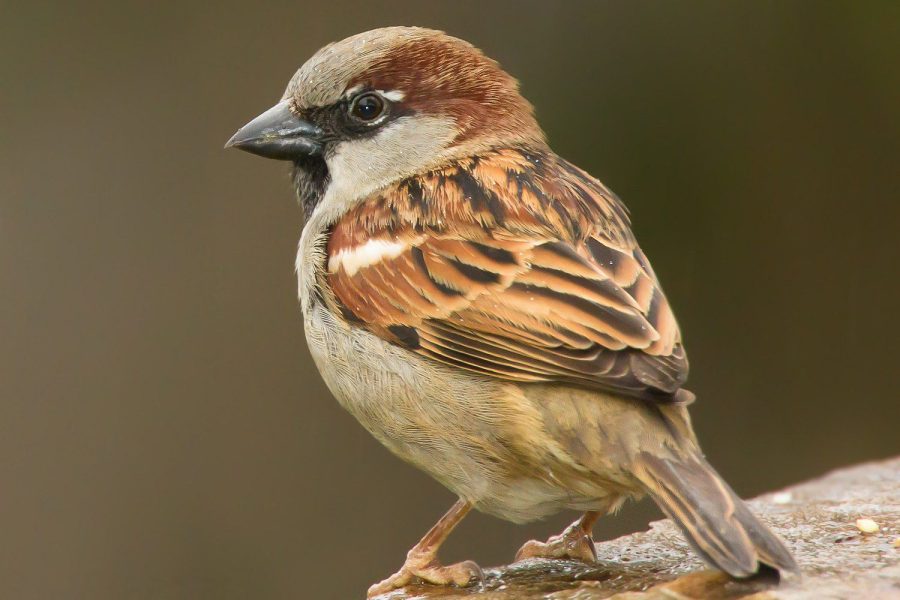
House sparrows lay oval eggs that are light brown, greenish, and bluish-white. Their nests are made up of coarse materials like dry grass, twigs, and paper.
They have a long breeding period and lay their first egg in Early March. When they are in a cold place, their egg-laying season is short. The incubation period is 11 to 14 days, and the clutch size is 4 to 5 eggs.
14. Raven
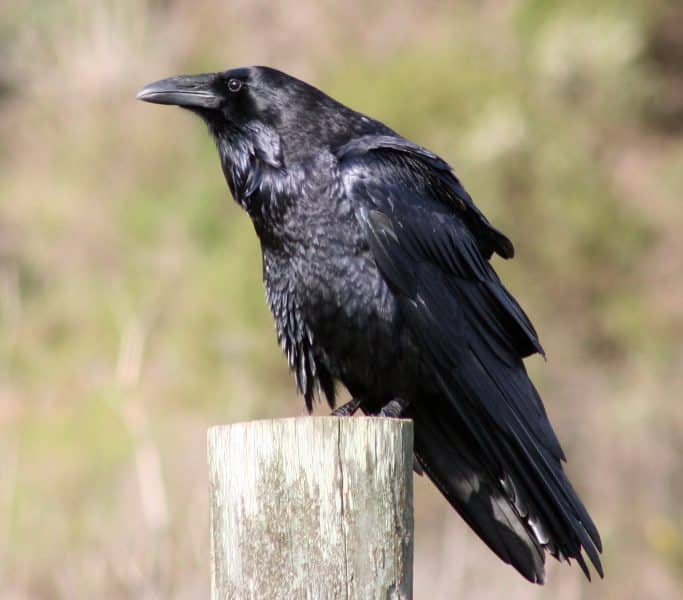
Raven birds lay eggs in various colors like olive, blue, or green with markings of purple, brown, olive, and others. They find their mates in autumn, and the incubation lasts 18 to 21 days.
The clutch size is 3 to 7 eggs. They choose bridges, cliffs, or billboards to make their nests. The nest-making period lasts for up to 9 days.
15. Eurasian Bullfinch
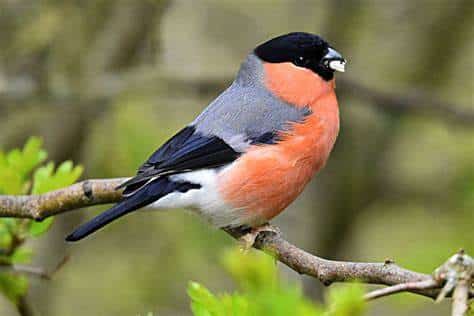
You will find these birds in woodlands, gardens, and orchards. Their breeding starts from May to July. The male birds bring the twigs and rootlets for making the loosely structured nests.
They produce 4 to 6 eggs, and the incubation lasts 12 to 14 days. The nests are built about 1 to 2 meters off the ground. The newborns start to fly after 16 to 18 days.
16. Green Heron
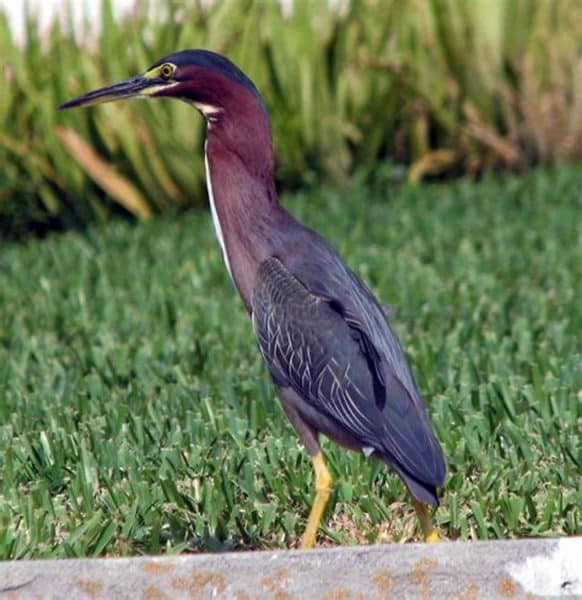
Green herons lay blue-green or pale-green eggs and build the nest on or over water. Mangroves, cedar, and hickory are common places where they build their nest.
The structure of these nests can vary from strong to flimsy. The incubation lasts 19 to 21 days, and the clutch size is 2 to 6 eggs. Green Heron brood twice a year.
17. Eastern Bluebird
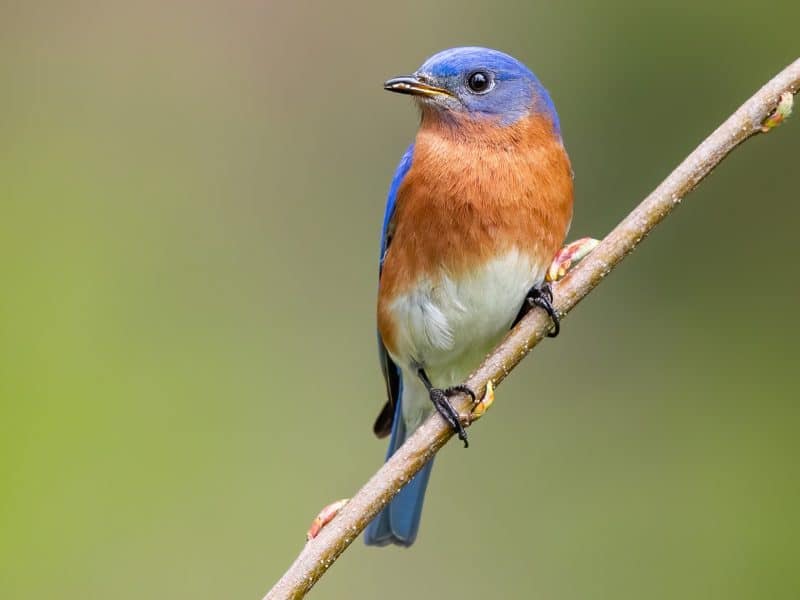
These birds build their nest in a cavity or chamber. They start building their nest around March and late April. The nest-making takes 5 to 6 days, and they use feathers, fibers, and other mammal fur.
The clutch size is 4 to 5 eggs, and the incubation period is 13 to 20 days. They have up to three broods in a year.
18. Blackbird
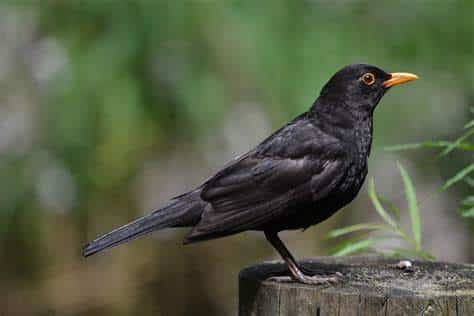
These birds are completely black with orange beaks. They lay eggs in shrubs, small trees, and climbing plants. They can have up to 4 broods in a year where they reuse their previous nests.
The incubation period lasts for 13 to 14 days, where they lay 3 to 5 eggs. These birds prefer to lay their eggs low on the ground.
19. Linnet
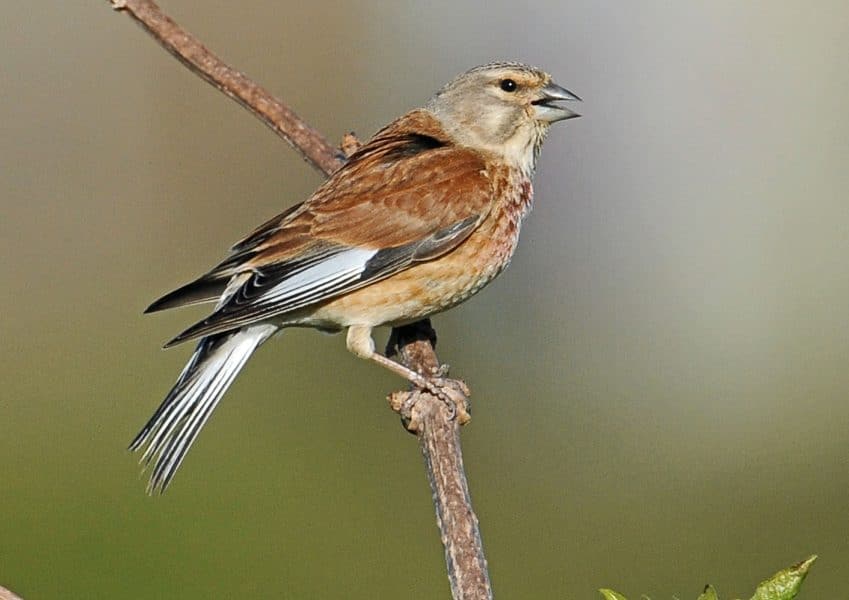
Linnets rely on seeds, and wherever there is a good supply, you will find their eggs. Female birds lay the eggs, and the male birds protect them from predators. The pale blue-colored eggs are enough to recognize them.
Their nests are mainly made of stems, roots, grass, and feathers. The incubation period lasts 10 to 14 days when they lay 4 to 5 eggs.
20. Emu
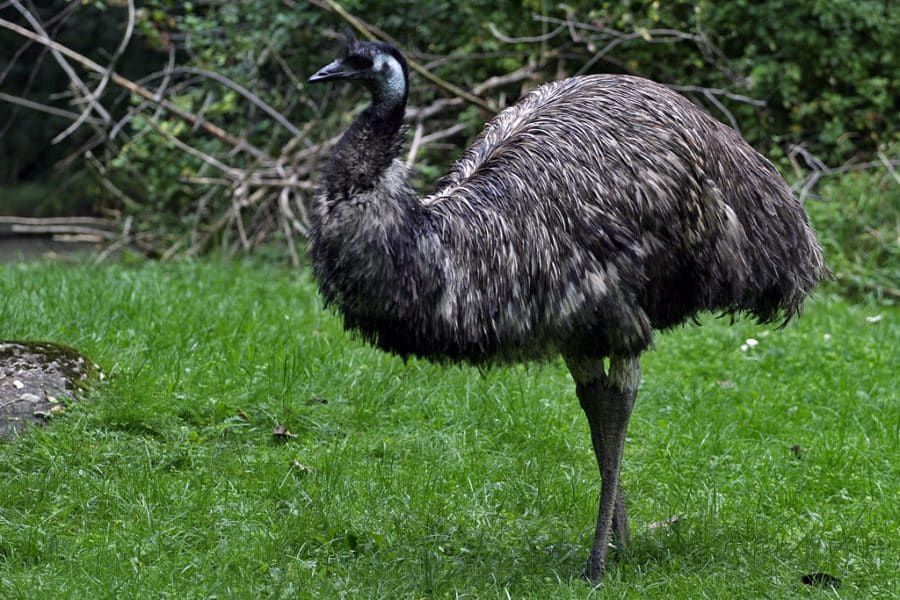
Wondering what bird has blue eggs? Emu, a flightless Australian bird, lays a unique shade of blue eggs and jade green. They start selecting their mating partner around December and January each year.
They start laying their eggs in mid or late April. Emu are known for incubating their eggs by sitting on them. Their clutch size is 5 to 15 eggs, and the incubation period lasts 46 to 56 days.
21. Tricolored Blackbird
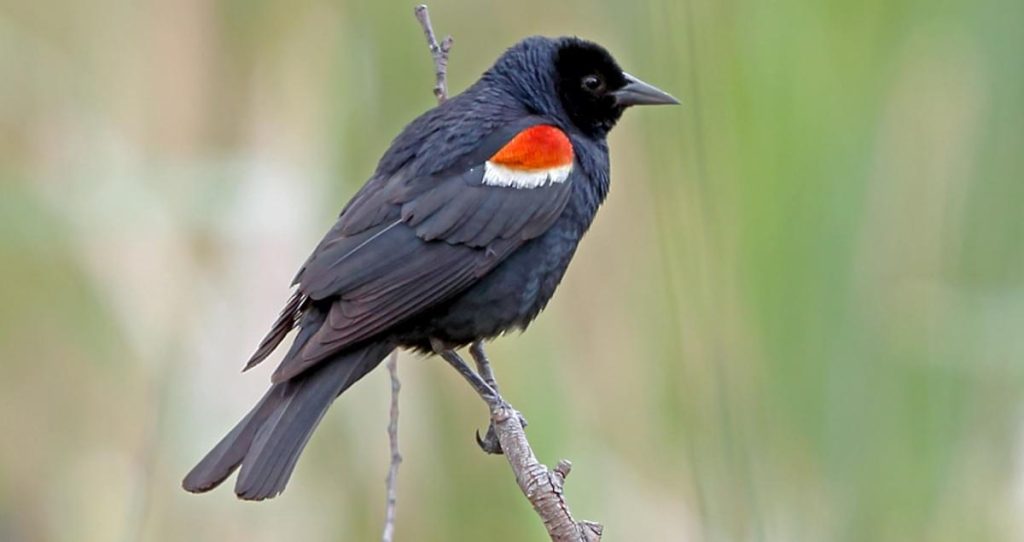
A tricolored blackbird lays pale blue eggs with reddish brown hues and wavy lines. Their nests are difficult to find since they are built in freshwater marshes.
It’s mostly the female bird who does all the work for three days straight. The incubation period lasts from 11 to 13 days, where they lay 1 to 6 eggs. The width of an egg is 0.63 inches, and 0.87 inches in length.
22. Cuckoo
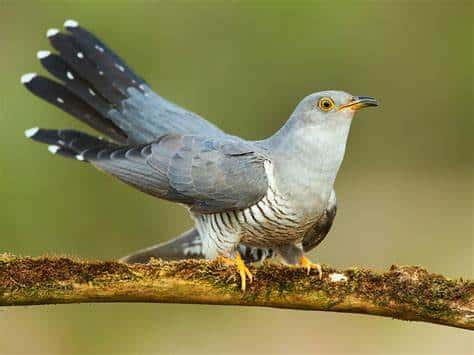
Cuckoos can lay various colors of eggs, like blue, grey, green, and brown. Brood parasitism is the reason for this coloration. Cuckoos don’t raise their young ones on their own. Rather, they lay their eggs on host birds’ nests.
They lay identical eggs that match with the host bird. The way all cuckoos can’t lay blue eggs, not all cuckoos that lay blue eggs can produce other colored eggs.
What Does the Colour of The Shell Say About the Bird?
The blue color of birds is due to the presence of a pigment called biliverdin. It is a greenish-blue pigment that is formed from the breakdown of hemoglobin. The intensity and specific shade of a bird’s egg varies from species to species.
Besides biliverdin, protoporphyrin is another pigment that decides the shade and pattern of an eggshell. The evolutionary purpose of blue eggs might still be a subject of ongoing research, but it surely serves as a fascinating subject of study.
Why Do Birds Lay Blue Eggs?
The blue-colored eggs of these birds say a lot about them and their biology. Following are some main insights into what this color of eggs indicates:
1. Mate Quality
The brightness or intensity of the blue color indicates the health and quality of a female bird. This helps the male birds to choose their mate better since the brighter the color of the egg, the better a female’s ability to get essential nutrients during egg production.
2. Camouflage
In certain situations, these blue-colored eggs are great for camouflage. The blue color of the eggs blends well with the surroundings, causing them to be less visible to potential predators.
3. Thermoregulation
The color of eggs plays an essential part in heat absorption and heat reflection. Blue eggshells help in regulating the temperature of the growing embryo. Shell thickness and composition are also key factors.
How are Birds Benefitting from Laying Blue Eggs?
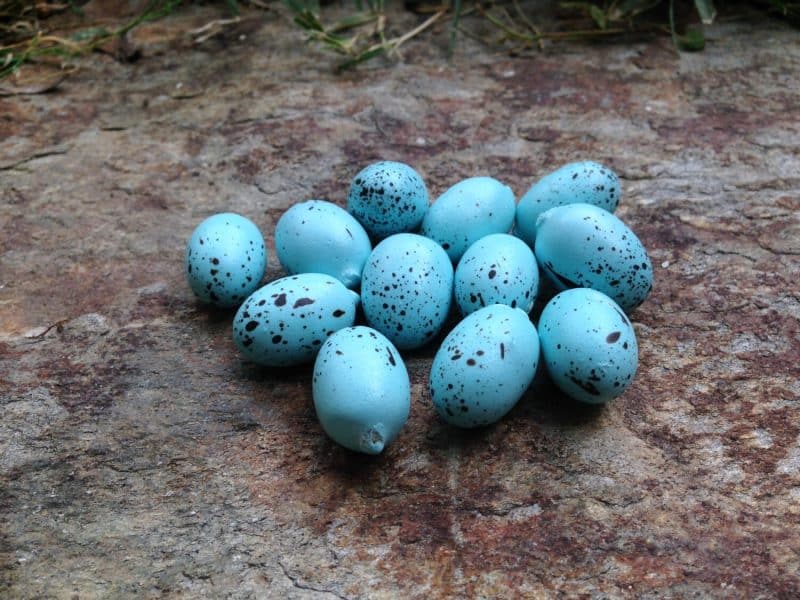
The blue color of the eggs is beneficial for the birds in many ways. It helps these birds survive and live a better life.
1. Nest Recognition
The color of the eggs helps the birds to identify their nest and is quite beneficial for those with multiple nests at close distances. This helps them avoid confusion and identify and tend to the nests well.
2. Protection From Predators
The blue color of the eggs helps them to stay protected. This solar helps the eggs to adjust to the surroundings and reduces the chances of any attack by the predators.
3. Temperature Regulation
Blue eggs absorb less heat compared to the dark-colored eggs. This helps in keeping the developing embryo cooler in warm climates. This is essential for those species living in high temperatures or intense sunlight.
4. Species Identification
The blue color of the eggs and their shades helps in identifying the species. Enthusiasts and scientists can get insights into the behavior and habitat of various bird species.
Conclusion
Birds belonging to different species have incredible diversity, evolution, and adaptation. The blue color of eggs is not just met by chance but has many reasons like genetics, ecology, and evolution. Biliverdin, breakdown of hemoglobin, blue pigment, and others are some reasons for this color of eggshells.
These birds are hugely affected by habitat loss, climate change, and other anthropogenic threats. In this blog, you will get detailed information about the various types of birds that lay blue-colored eggs.
This eggshell color also carries broader implications like avian biology, mate selection, disease resistance, and others.
Frequently Asked Questions
Which Bird Species Lay Blue Eggs?
Various bird families lay blue eggs. Some examples of these birds are the European Starling, American Robbin, Common Murre, Eastern Bluebird, and many more. Please refer to the above blog for more names.
Do All Birds of a Particular Species Lay Blue Eggs?
No, not all birds of a particular species lay blue eggs. Genetics, diet, and many other factors influence the blue color of the egg. The shades, spots, speckles, and other marks on these eggs can differ.
Can the Blue Color of These Eggs Change Over Time?
Yes, in some cases, the blue color of the eggs might fade or darken over time. Exposure to sunlight, moisture, and microbial activity are some factors that affect this color change.
Do All Species of Birds Lay the Same Colored Blue Eggs?
No, all the birds of species do not lay the same blue color. The blue color can vary from pale blue to turquoise or even greenish-blue. The color hugely depends on the species, their genes, and many other factors.

